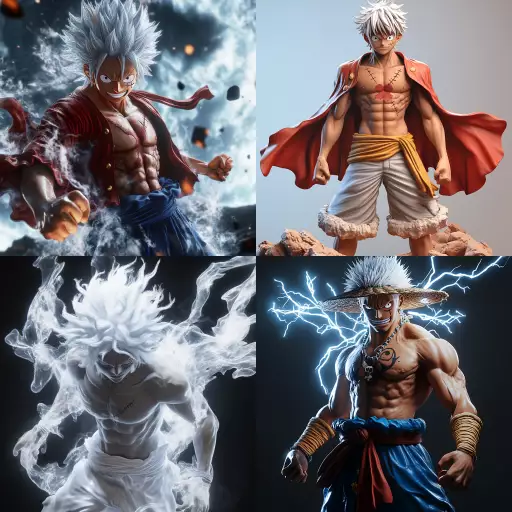Explore the Best AI Image Gallery

AI-Powered Design: Reimagining the Creative Landscape
The realm of graphic design is undergoing a profound transformation, driven by the rapid advancements in artificial intelligence (AI). From generating stunning visuals to automating tedious tasks, AI is reshaping how designers create and collaborate. This blog post will explore the multifaceted impact of AI on the creative industry, examining its potential uses, ethical considerations, and future trends.
Unlocking Creative Potential with AI Tools
AI-powered design tools are empowering graphic designers with a range of innovative features:
- Image Generation: AI algorithms can generate unique images based on textual prompts or existing artwork, expanding the creative possibilities for designers.
- Logo and Branding Design: AI can assist in creating logos and branding elements that align with specific style preferences and target audiences.
- Layout and Composition Assistance: AI-powered tools can suggest optimal layouts and compositions for designs, streamlining the creative process.
- Typography Selection: AI algorithms can analyze text content and recommend suitable font pairings that enhance readability and visual appeal.
- Color Palette Generation: AI can generate harmonious color palettes based on design concepts or brand guidelines, ensuring visual consistency.
These AI-powered tools are not meant to replace human designers but rather to augment their capabilities, allowing them to focus on conceptualizing and refining creative ideas.
The Ethical Considerations of AI in Design
While AI offers immense potential for graphic design, it also raises important ethical considerations:
- Bias in Algorithms: AI algorithms are trained on vast datasets, which may contain biases that perpetuate existing societal stereotypes or inequalities.
- Copyright and Ownership: The ownership of AI-generated artwork remains a complex legal issue, with debates surrounding the rights of creators and the role of AI.
- Transparency and Explainability: The decision-making processes of AI algorithms can be opaque, making it difficult to understand how designs are generated.
- Job Displacement: There are concerns that AI-powered tools may automate certain design tasks, potentially leading to job losses in the creative industry.
It is crucial for designers, developers, and policymakers to address these ethical challenges proactively to ensure responsible and equitable use of AI in graphic design.
Future Trends in AI-Powered Design
The field of AI in graphic design is constantly evolving, with several exciting trends on the horizon:
- Personalized Design Experiences: AI will enable the creation of highly personalized designs tailored to individual preferences and needs.
- Generative Adversarial Networks (GANs): GANs will continue to push the boundaries of AI-generated imagery, producing even more realistic and creative visuals.
- Immersive Design: AI will play a role in designing for immersive experiences, such as virtual reality (VR) and augmented reality (AR), creating interactive and engaging environments.
- Human-AI Collaboration: The future of design will likely involve seamless collaboration between human designers and AI systems, leveraging the strengths of both.
As AI technology advances, we can expect to see even more innovative applications in graphic design, blurring the lines between human creativity and artificial intelligence.
Embracing the AI-Powered Future
The integration of AI into graphic design is a transformative shift that presents both opportunities and challenges. By embracing responsible development and ethical considerations, designers can harness the power of AI to unlock new creative frontiers, enhance their workflows, and shape the future of visual communication.






![**Representation: A dog acting as a private tutor to a child. The dog holds a ruler in its paw and stands at the blackboard to explain a dog diagram to the child. Graphic style: Line drawing, cartoon style, influenced by Franco-Belgian comics, thick black lines, simplified design, vector, black and white only, in the style of Keith Haring or the French comic strip "Alinéa". [IMPORTANT]: A single continuous line extending from one side of the image to the other, minimalist, strong outlines, line drawing, without lifting the hand, ultra-simplified, no shading, entirely white image, drawing created in the center of a sheet of paper. --ar 16:5** - <@627984126871470085> (fast)](https://images.ai-img.art/thumbnails/150/7a854648a81e51241dcca8d24dd6e3bfcf07ad1df51baf401c9b729f4cf411fa.webp)


![**Representation: A teenager smiling while thinking about a friendly dog, a comic-style thought bubble with a friendly dog inside. Graphic style: Line drawing, cartoon style, influenced by Franco-Belgian comics, thick black lines, simplified design, vector, black and white only, in the style of Keith Haring or the French comic strip "Alinéa". [IMPORTANT]: A single continuous line extending from one side of the image to the other, minimalist, strong outlines, line drawing, without lifting the hand, ultra-simplified, no shading, entirely white image, drawing created in the center of a sheet of paper. --ar 16:5** - <@627984126871470085> (fast)](https://images.ai-img.art/thumbnails/150/6fc850f638e3dee0c4b121acecad2c8419e02bdeac7f871d625f1003c1c3abe1.webp)




![**Representation: A dog acting as a private tutor to a child. The dog holds a ruler in its paw and stands at the blackboard to explain a dog diagram to the child. Graphic style: Line drawing, cartoon style, influenced by Franco-Belgian comics, thick black lines, simplified design, vector, black and white only, in the style of Keith Haring or the French comic strip "Alinéa". [IMPORTANT]: A single continuous line extending from one side of the image to the other, minimalist, strong outlines, line drawing, without lifting the hand, ultra-simplified, no shading, entirely white image, drawing created in the center of a sheet of paper. --ar 16:5** - Variations (Strong) by <@627984126871470085> (fast)](https://images.ai-img.art/thumbnails/150/f4e034998ccd869d8a061fd12017514fcd92210eb33d4222dc9b54716223f4dd.webp)
](https://images.ai-img.art/thumbnails/150/51c93500396faff4e7fa8b42bc68033067b16b2230e3496e95c482a581ff0fe9.webp)





](https://images.ai-img.art/thumbnails/150/9d51c5e673b4f2068b7b01abc35425a06f173b76303adf9ad29ca14302c25b18.webp)



](https://images.ai-img.art/thumbnails/150/157712d76865d557120f9baf988de3d0525225295a2789c89bf2c4a5a96a03d1.webp)


















